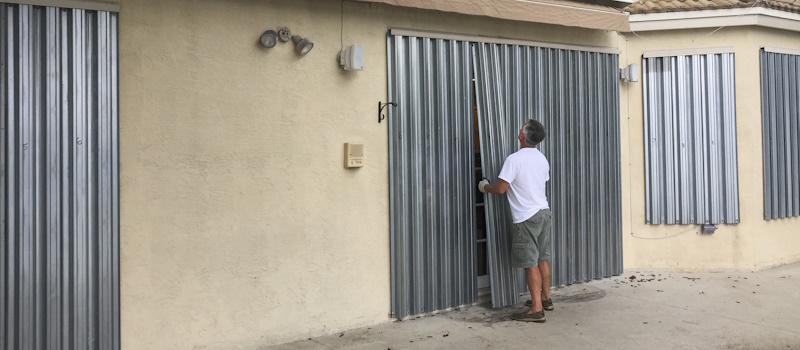How to Protect Your Home This Hurricane Season
How to Protect Your Home This Hurricane Season

How to Protect Your Home This Hurricane Season
From May through November, many coastline cities face increased risks due to hurricanes and tropical storms. To protect your property and your family, it’s important to be prepared for storms that may take shape quickly, move unpredictably, and hit hard. Here are some ways you can prepare your home for hurricane season.
Move Outside Items
Loose items in your yard can become hazardous projectiles during high winds. It's crucial to move outside items indoors and secure your things before a big storm—even your large items that seem heavy and hard to move. Patio furniture, trampolines, garden tools, trash cans, and bicycles are just a few examples of things that should be secured or stored to stop them from flying away in high winds.
Cover Windows and Doors
During high windstorms, glass windows become high-risk entry points that are very susceptible to damage. Cover windows and doors to reduce the likelihood of shattered glass, shield your home's interior from flying debris, and reduce the risk of structural damage a hurricane's force can cause.
Installing storm shutters or boarding up windows can prevent shattered glass from causing injuries and minimize rain and wind intrusion. Placing sandbags in front of doors can decrease the risk of flooding and water damage, preserving your home's foundation and interior spaces.
Keep Trees Trimmed
Maintaining well-trimmed trees around your property is a crucial aspect of hurricane preparedness. Regular tree trimming reduces the possibility of branches breaking off during high winds, which can cause significant damage to your home and surrounding structures. Cut down dead trees before hurricane season to avoid an increased chance of them falling during a storm.
Pruning overhanging branches and dead limbs prevents them from becoming potential projectiles, blocking roads, causing power outages, and damaging your property during a hurricane. Keep trees trimmed back from power lines to avoid power outages and dangerous situations.
Create an Emergency Plan
Developing an emergency plan is a critical aspect of hurricane preparedness. It establishes clear communication and actions among family members. Designate an out-of-area family contact to keep everyone informed about each other's status. Assign specific responsibilities to family members (such as getting pets or grabbing emergency supplies) for a coordinated response that covers all necessary tasks for the scenarios you are most likely to run into.
Prepare to Turn Off Your Power
If the storm gets bad in your area, turning off the power to your home could mitigate electrical hazards. Familiarize yourself with the location of your electrical panel and learn how to safely shut off the main circuit to prevent accidents. Additionally, unplug electronic devices and appliances before the storm to safeguard them from power surges and potential damage due to power fluctuations.
Be Ready for an Evacuation
Where will you go if an evacuate order is given? You may need to leave your home quickly, so have a plan for where you should go, get your home ready, and have important things packed in bug-out bags. Gather essential documents, medications, and a basic emergency kit ahead of time to facilitate a smooth and timely departure. Familiarize yourself with evacuation routes and establish a designated family meeting point to account for all members and maintain safety throughout the evacuation process.
